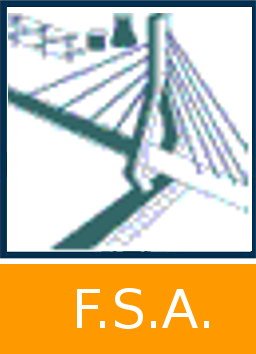Robustness of steel structures - study of the applicability of innovative methods on real structures
Vermeylen, Maxime 
Promotor(s) :
Demonceau, Jean-François 
Date of defense : 24-Jun-2021/25-Jun-2021 • Permalink : http://hdl.handle.net/2268.2/11550
Details
| Title : | Robustness of steel structures - study of the applicability of innovative methods on real structures |
| Translated title : | [fr] Robustesse des structures métalliques - étude de l'applicabilité de méthodes innovantes sur des structures réelles |
| Author : | Vermeylen, Maxime 
|
| Date of defense : | 24-Jun-2021/25-Jun-2021 |
| Advisor(s) : | Demonceau, Jean-François 
|
| Committee's member(s) : | Jaspart, Jean-Pierre 
Franssen, Jean-Marc 
Golea, Tudor 
Wertz, Freddy WEYNAND, Klaus |
| Language : | English |
| Number of pages : | 99 |
| Keywords : | [en] Robustness [en] Tying method [en] Steel structure [en] FailNoMore |
| Discipline(s) : | Engineering, computing & technology > Civil engineering |
| Name of the research project : | FailNoMore |
| Institution(s) : | Université de Liège, Liège, Belgique |
| Degree: | Master en ingénieur civil des constructions, à finalité spécialisée en "civil engineering" |
| Faculty: | Master thesis of the Faculté des Sciences appliquées |
Abstract
[en] The request for robustness of structures is a recent topic aiming at ensuring the structural integrity of a structure in case of exceptional events. General design recommendations are provided in modern codes and standards but they are far from being satisfactory as it has been demonstrated that the respect of these recommendations do not necessarily allow to guarantee a sufficient robustness to a structure. It is the reason why research activities are still ongoing in this field in view of (i) mastering the response of structures when subjected to exceptional events and, on this basis, (ii) to derive rules for practitioners. This master thesis takes place in this context.
The objective of this master thesis is to study and apply methods for steel building structures allowing to reach an appropriate level of robustness. These research will be performed in the framework of an ongoing European RFCS project entitled "FailNoMore".
In particular, a 3D steel structures, initially designed by a German design office for “classical” loading conditions, will be studied in view of (i) characterising its behaviour when subjected to a specific exceptional event, i.e. the loss of a supporting member, and of (ii) investigating the efficiency of existing design methods for robustness. At the end of the work, a critical analysis of the results obtained with the different methods will be provided in view of making recommendations for practice.
These objectives will be achieved using numerical and analytical approaches. The numerical investigations will be realised using the FINELG software.
This master thesis will show that the tying method, such as it is present in the Eurocode, does not make it possible to ensure a sufficient robustness in the case of the scenario considered of the loss of a column.
It is also shown that, following a numerical study, the weakness of the structure is in the connections. A structure with hinged connections is not robust when column loss is considered.
By using partially resistant connections, and by means of an innovative analytical approach, it is shown that the considered structure can be robust under the exceptional scenario of column loss by slightly modifying the properties of the structure.
File(s)
Document(s)
Annexe(s)
Cite this master thesis
The University of Liège does not guarantee the scientific quality of these students' works or the accuracy of all the information they contain.


 Master Thesis Online
Master Thesis Online



 All files (archive ZIP)
All files (archive ZIP) Master_Thesis_Maxime_VERMEYLEN.pdf
Master_Thesis_Maxime_VERMEYLEN.pdf

